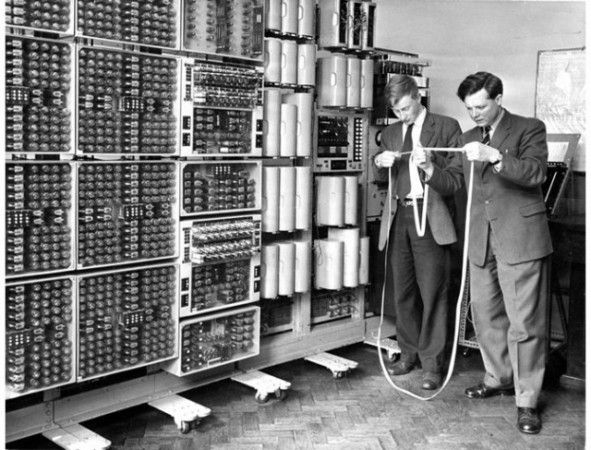Types of memory
What is memory?
In computer science, the memory is the device that retains, memorizes or stores computer data for some period of time. Memory provides one of the main functions of modern computing: the storage of information and knowledge. It is one of the fundamental components of the computer, which interconnected to the central processing unit and the input / output devices, implement the fundamentals of the computer model of the von Neumann architecture.
Currently, "memory" usually refers to a form of solid-state storage, known as RAM, and sometimes refers to other forms of rapid, but temporary, storage. Similarly, it refers to forms of mass storage, such as optical disks, and types of magnetic storage, such as hard drives and other types of storage, slower than RAM, but of a more permanent nature. These contemporary distinctions are helpful, because they are fundamental to computer architecture in general.
History
At the beginning of the computers, the concept of memory was very different from the current one and even the design of it differs from the modern and compact one that now includes your PC or Mac. First the vacuum tubes were used and then came the transistors that were the causing computers to stop occupying the space of a football field to enter a room.
The arrival of the transistor changed the concept of computing completely, in essence it is a microscopic vacuum tube that saves energy and does not dissipate so much heat. It was here that the second era of computers began followed by the third era with integrated circuits and the fourth era with microprocessors.
Types of memory
-Pen drive
The USB memory also called memory stick, USB stick, external memory, pen drive or pendrive is a type of data storage device that uses flash memory to store data and information.
-Hard disk
In computer science, the unit of hard disk or hard disk drive (in English: Hard Disk Drive, HDD) is the device of storage of data that uses a system of magnetic recording to store digital files. It consists of one or more plates or rigid discs, joined by a same axis that rotates at high speed inside a sealed metal box. On each plate, and on each of its faces, there is a read / write head that floats on a thin sheet of air generated by the rotation of the discs. It is non-volatile memory.
-Random access memory
Random access memory (RAM) is used as working memory of computers for the operating system, programs and most of the software. All the instructions executed by the central processing unit and other units of the computer are loaded into the RAM.
-Memory of only reading
The read-only memory, also known as ROM (acronym in English of read-only memory), is a storage medium used in computers and electronic devices, which allows only the reading of information and not its writing, regardless of the presence or not from a source of energy. This is not a sequential access memory.
-Flash memory
The flash memory derived from the acronym EEPROM allows the reading and writing of multiple memory locations in the same operation. Thanks to this, the flash technology, always using electrical impulses, allows much higher operating speeds compared to the original EEPROM technology, which only allowed to act on a single memory cell in each programming operation. It is the technology used in devices called USB memory.
Characteristics of memory
The division between primary, secondary, tertiary, off-line, is based on the hierarchy of memory or distance from the CPU. There are other ways to characterize the different types of memory. Volatility of information Photo of DDR type RAM memory installed in its socket.
Volatile memory requires constant power to keep the information stored. Volatile memory is usually used only in primary memories. RAM is a volatile memory, as it loses information in the lack of electrical power.
The non-volatile memory will retain the stored information even if it does not receive electrical power constantly, as is the case with ROM. It is used for long-term storage and, therefore, it is used in secondary, tertiary and off-line memories.

